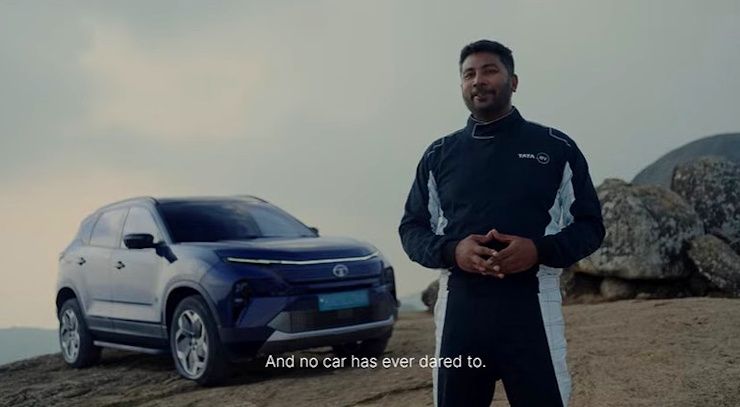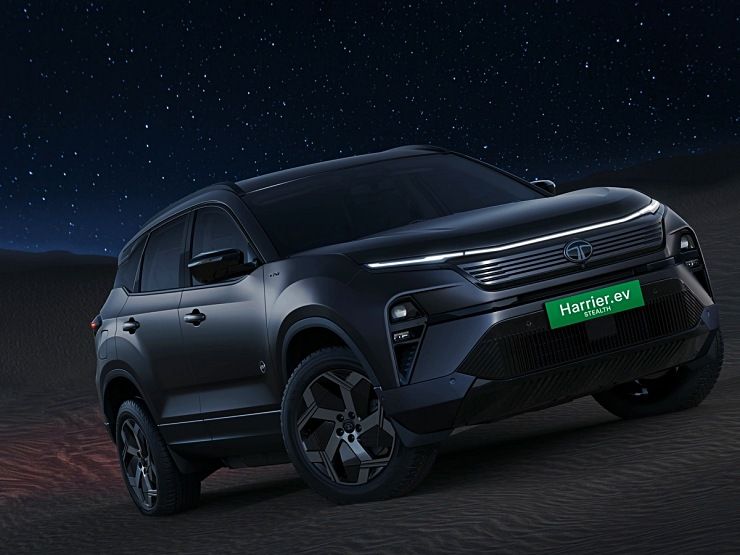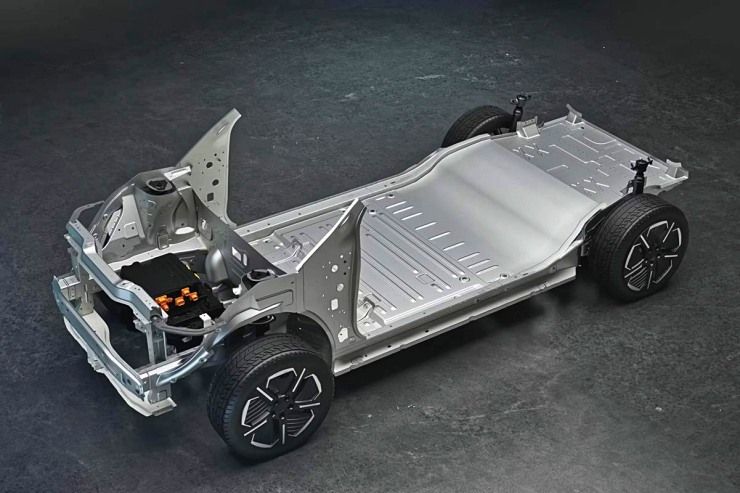Tata Harrier.EV: First TVC Shows Off AWD Electric SUV's CRAZY Climbing Ability


In less than two days from now, Tata Motors will launch its most ambitious electric vehicle yet, the Harrier.EV. Showcased at multiple events including the Bharat Mobility Expo and the EV Day in April 2025, the Harrier.EV is finally ready to roll onto Indian roads. It will be the first affordable all-wheel drive electric SUV sold in India, and Tata Motors is leaving no stone unturned to showcase the Harrier.EV's impressive off road ability. Here's the first TVC for the Tata Harrier.EV, one that shows what the SUV can do with its mammoth 500 Nm torque output allied to an all wheel drive layout. Well, the Harrier.EV shows off a crazy 68 degree gradeability - the ability to climb a 34 degree slope.
The TVC shows a Harrier.EV climbing the Thangalapara, also known as the Elephant Rock - in Kerala. The rock is about 3,937 feet above sea level, and its peak has an incline of about 34 degrees.
The TVC opens with locals describing the rock, and how unforgiving it can be - lightning is known to strike the rock multiple times, and the winds up there can get so intense that one has to lie down to escape from losing balance and falling off it.

Then the camera focuses on the man tasked with climbing this rock - Dr. Mohammed Zahed - who's identified as a 'pro' off-roader. The challenge then begins, and a few of the Harrier.EV's key features are shown.
One such interesting feature is the 'off road mode', which activates the all wheel drive system. Notably, the off-road mode seems to have multiple sub-modes such as rock crawl and sand modes. The torque distribution between the front and rear axle is also clearly visible on the driver information TFT display. There's boost mode as well, possibly one that lets the two motors deliver peak horsepower and torque on demand.

The Harrier.EV comes with dual motors - one for each axle, and this also gives it the distinction of being the first affordable EV to offer such a set up in India. So, far we've had affordable EVs offering front wheel drive and rear wheel drive layout, and none have gone in for an all wheel drive layout-dual motor set-up. Full marks to Tata Motors here, for pushing the envelope.

Another interesting take from the TVC concerns the range of the Harrier.EV. The vehicle shows an impressive 560 kilometers of range with 90 % of battery left. It'll be interesting to see what the Harrier.EV will offer in the real world. We expect it to offer about 450 Kms of true range, with a 75 kWh battery on board.
The Harrier.EV also comes with a 'transparent mode' - Tata's take on Land Rover Defender's ClearSight Groundview technology, which uses cameras placed on the undercarriage to show terrain under the car.
Similarly, in case of the Harrier.EV, augmented reality (AR) seems to project the SUV's four wheels on the terrain it's traversing. This is another feature never been seen on an Indian car - electric or otherwise. Full marks to Tata Motors, again, for including very useful stuff.
As for performance, the Harrier.EV is expected to be the fastest production electric car in the affordable segments, with a 6 second 0-100 Kph run, beating incumbents Mahindra BE6 and XEV 9e, for that honour.
The Harrier.EV's twin motor layout is expected to output 369 Bhp-500 Nm, again numbers that make it the most powerful Indian electric car. A cheaper and less powerful single motor variant is also likely to make the cut, with a more conventional front wheel drive layout. We'll have more details from the launch, which is just around the corner.
Meanwhile, we'll leave you with the Harrier.EV's impressive 50 % gradeability, which is 26.6 degrees of incline. Now, you know why Thangalapara, with its 68 % gradient (34 degree incline) is so impressive!